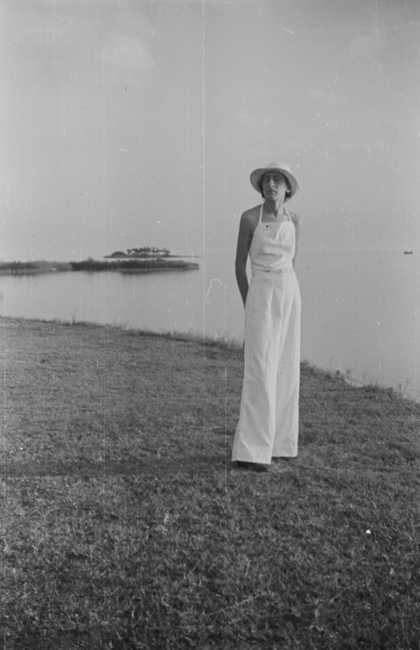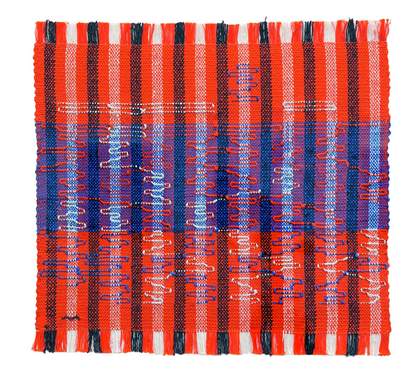
Anni Albers in Florida, c.1938–9, photographed by Josef Albers
© 2018 The Josef and Anni Albers Foundation/Artists Rights Society (ARS), New York/DACS, London
I first saw the work of Anni Albers in the mid-1990s in a book on the Bauhaus. What struck me was the immediate artistic intimacy of her woven textiles and swatches, as well as an overwhelming sense of this artist’s broad eye. But the real awakening came many years later: I had the privilege of being able to include some rarely seen pieces by her in the Making and Unmaking exhibition that I curated at the Camden Arts Centre in 2016 – a show that placed her work alongside that of over 60 artists, including Chris Ofili, Louise Bourgeois, Sheila Hicks, Alice Neel and Lynette Yiadom-Boakye. The idea of the exhibition was that an artist’s creative and making process was intrinsically similar to weaving on a loom, with all its rigorous techniques and beautiful flaws, which made Anni Albers’s work not only a perfect inclusion but also the basis for the exhibition.
I am drawn to her work because I feel her hand and spirit in every piece, be it a fully formed work, swatch or a study. Her work exemplifies what I aspire to and try to apply to mine in all its forms: an unerring juxtaposition of colours and textures, and the rigorous yet natural and intuitive coming together of the hand and mind in the making process.
On close examination, one feels how a love for many different cultures and making techniques played an essential role in her work. Something that was about passion and understanding without appropriation.
The exhibition A Beautiful Confluence, curated by Nicholas Fox Weber at Milan’s Museo delle Culture in 2015, wonderfully conveyed how she and her husband Josef Albers, with little money, made many trips to Mexico and other places in Central and South America. There they explored and photographed places and objects while also buying and amassing an amazing collection of everything from small pre-Columbian artefacts to tourist fare and literature, believing that ‘Art is everywhere’. Anni Albers’s records of travels there and elsewhere show a respect for, and clarity of, what she saw in a way that is beautiful and inspiring.
One feels the restraints of her gender and role as wife, both in the early and later stages of her career. The 1920s Bauhaus movement of Weimar Germany, with all its sexist ideas of the kind of mediums its women artists, including herself, should use in making art did not deter her. In fact, she sought new and multidisciplinary ways of making her pieces, from paintings, drawings, studies and tapestries to smaller woven samples and jewellery. Size is not an essential element in the appeal and attraction of her art. Rather, there is a poetic, thoughtful and hypnotic depth to her oeuvre that I find both exciting and moving. It seems to me that liberation and a kind of sanity could only really be attained through her disciplined approach to making her work in its many dimensions, which she pursued throughout her life.
And although some of her legacy still either gets wrapped up in that of her husband, or in movements and other people she is associated with, the passing of time has allowed her to be understood as the great and prolific artist she was; a quiet and serious-looking genius with magic hands that transformed the simplest materials into gold.
Duro Olowu is a Lagos-born British fashion designer and curator who lives and works in London. His first book will be published by Callaway in autumn 2019.


